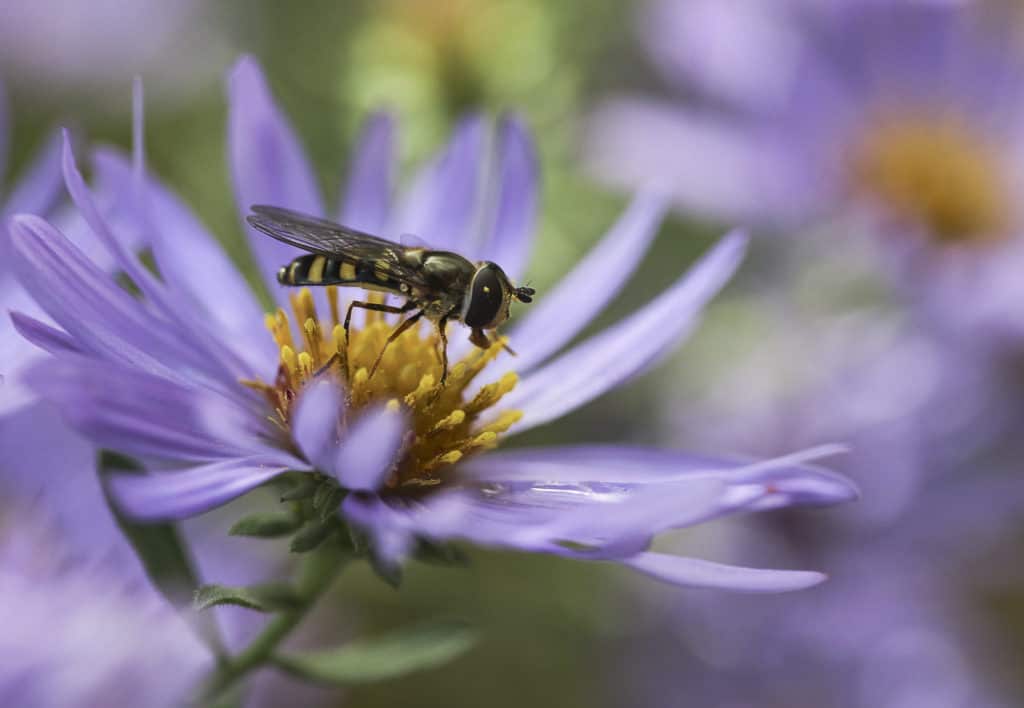Creature Feature

The Helpful Hoverfly
By Wayne Bierbaum
I have a couple of patches of purple-stemmed asters. They are one of the latest blooming flowers. Mine start blooming in late October and then continue until December. The flowers feed the late fall butterflies, moths and other pollinators. Today, I was hoping to find a butterfly on the flowers but it was too windy and cold. Instead, I found a colorful little fly, a hoverfly. They are considered a gardener’s helper, a beneficial insect.
The hoverfly has markings that imitate a bee or wasp and frequently move their abdomen in a way that implies that a stinger is present. Yet, they have no stinger and do not bite. They are typically under one half inch in size and with 600 species, are found almost worldwide.
As their name implies, the little flies will hover in place, usually over a flower. When a group of them are around, especially in mating season, they will do some aerial dog-fights. I saw a pair of flies eat both pollen and nectar, so they are certainly important for pollinating certain crops.
Several of the species of hoverfly found in Maryland have a larval form that eats aphids and small caterpillars. Gardening groups suggest planting plants with small flowers to help attract hoverflies in order to control aphids on garden plants.
